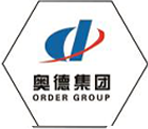
Nov . 24, 2024 05:39
Back to list
gas coalescer filter
Understanding Gas Coalescer Filters Function, Design, and Applications
Gas coalescer filters are essential components in various industrial processes, providing efficient filtration solutions that help maintain the integrity of gas streams by removing particulates, water, and other contaminants. The essential functionality of these filters is based on the principle of coalescence, where small droplets of liquid are merged into larger ones, facilitating their separation from the gas phase.
The Functionality of Gas Coalescer Filters
At their core, gas coalescer filters are designed to separate liquid contaminants from gaseous media. This separation is crucial in preventing damage to downstream equipment, improving process efficiency, and ensuring the quality of the produced gas. For example, in natural gas processing facilities, the presence of liquid hydrocarbons or water can lead to corrosion in pipelines, reduce the calorific value of the gas, and attract unwanted pollutants. Gas coalescer filters mitigate these risks by capturing and separating liquid water and other condensates from the gas before it is transported or utilized.
The operation of a gas coalescer filter typically involves several stages. Initially, the gas enters the filter assembly and passes through a coalescing media, which is designed to promote the growth of liquid droplets. As the gas flows through these filter elements, smaller droplets collide and combine to form larger droplets. This coalescing action increases the efficiency of liquid separation, enabling the larger droplets to settle out of the gas stream due to gravity. The clean, processed gas then continues through the system, while the collected liquids are drained away for further treatment or disposal.
Design Considerations for Gas Coalescer Filters
The design of gas coalescer filters plays a critical role in their performance and efficiency. Several factors must be taken into account to ensure optimal functionality. One primary consideration is the choice of coalescing media, which can be made from different materials based on the specific application and contaminants present. Common media choices include glass fiber, polyester, and polypropylene, each offering distinct benefits in terms of filtration efficiency and durability.
Another critical design aspect is the filter's housing. It must be robust enough to withstand varying pressures and temperatures encountered in different industrial environments. Additionally, the filter must allow for easy maintenance and replacement of elements to ensure uninterrupted operation.
gas coalescer filter

Fluid dynamics also come into play when designing gas coalescer filters. The flow path through the filter should be engineered to minimize turbulence and allow for optimal coalescing action. Proper inlet and outlet configurations ensure that the gas stream is evenly distributed, enhancing the overall effectiveness of the filtration process.
Applications of Gas Coalescer Filters
Gas coalescer filters find extensive applications across various industries, including oil and gas, power generation, chemical processing, and pharmaceuticals. In the oil and gas sector, they are vital in natural gas processing plants, where they help maintain gas purity and prevent hydrocarbon carryover.
In power generation, gas coalescers are often used in gas turbine applications to protect combustion chambers from liquid contaminants that could cause damage or inefficiencies. The chemical processing industry utilizes these filters to ensure that gases used in reactions are free from moisture, which could hinder reaction rates or lead to side reactions.
Moreover, in the semiconductor and pharmaceutical industries, high-purity gas applications demand rigorous filtration solutions. In these sectors, gas coalescer filters ensure that input gases are devoid of any contaminants, safeguarding product integrity and quality.
Conclusion
Gas coalescer filters represent a crucial technology in maintaining the quality and efficiency of gas streams across various industrial applications. By effectively removing liquid contaminants through the principle of coalescence, these filters protect equipment, enhance process efficiency, and ensure compliance with quality standards. As industries continue to evolve and demand higher purity levels, the role of gas coalescer filters will only become more significant, underscoring the need for ongoing innovation and development in filtration technology.
Next:
Latest news
-
Safety Valve Spring-Loaded Design Overpressure ProtectionNewsJul.25,2025
-
Precision Voltage Regulator AC5 Accuracy Grade PerformanceNewsJul.25,2025
-
Natural Gas Pressure Regulating Skid Industrial Pipeline ApplicationsNewsJul.25,2025
-
Natural Gas Filter Stainless Steel Mesh Element DesignNewsJul.25,2025
-
Gas Pressure Regulator Valve Direct-Acting Spring-Loaded DesignNewsJul.25,2025
-
Decompression Equipment Multi-Stage Heat Exchange System DesignNewsJul.25,2025

